The prompt: “A fleet of trucks driving up a waterfall outside a fairytale kingdom.” Generative AI by iStock
Stock photography giant Getty Images last September unveiled a generative artificial intelligence (AI) service for images that it says is safe to use because it is trained on the content library under license from Getty. And it therefore does not run the same risk of copyright infringement as other programs that use generative AI.
Getty insists its program provides compensation for users. The content license agreement displayed after registration specifies that “iStock’s maximum aggregate liability (i.e., the total amount for which iStock is liable, whether under this or any other agreement relating to the same content) is limited to US$10,000 per piece of content. “Extended” compensation of $250,000 per piece of content can be purchased as additional protection.
15 euros to test
I tested the “Generative AI by iStock” program, using the introductory offer of $14.99 for 100 image generations. To get started, I created an account on istockphoto.com, and provided credit card details which was instantly charged $14.99.
After entering a prompt, the results displayed four images at a time, with each batch of four images counting as one of the initial 100 images in the offering.
I tried the same prompts on DALL-E and ClipDrop. The iStock results are much less interesting from an aesthetic and narrative point of view, they are overall rather bland. But the images created correspond rather with the request of the prompt.
The apple test
For example, to create an imaginary scenario of apples inside some kind of experiment, I submitted to DALL-E the following prompt: “An apple inside a bottle lying on its side, with apples on each side of the bottle. This produced a vivid scene of a table full of interesting scientific instruments. The iStock version matches the prompt, but is much less interesting (see below).
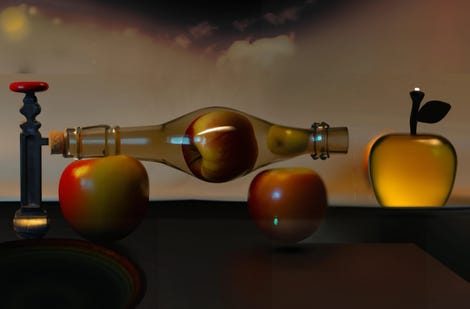
SLAB
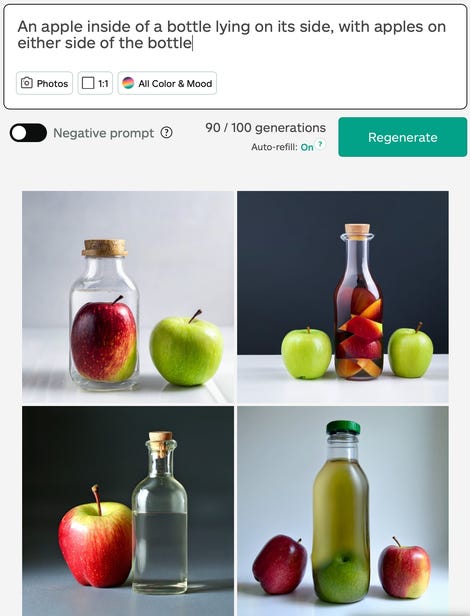
Generative AI by iStock
The machine test
Another prompt I used was used to depict an impossible imaginary computer: “An incredibly complex, room-sized computer with hundreds of gears, levers and dials and a digital interface.”
In Clipdrop, the prompt produced an intriguing and detailed scene of a room with various pieces of machinery, complete with detailed texture and a door that looked ominous.
In iStock, the result was simply what looked like a concentration of gears, with none of the implied drama that made the Clipdrop image interesting.

ClipDrop

Generative AI by iStock
The cloud computing test
A third example, also in Clipdrop, aimed to illustrate the mysterious nature of cloud computing. I offered the following prompt: “Hundreds of little workers with cranes building castles in the sky, photograph.”
In Clipdrop, this proposal gave rise to the representation of a construction site, which revolves around a sort of Tower of Babel, an interesting touch of improvisation on the part of Clipdrop which went beyond the explicit guidelines of the proposal.
The iStock rendering, once again, had all of the elements mentioned, but came down to a rather bland, very literal rendering, devoid of atmosphere or ambiance.

ClipDrop

Generative AI by iStock
The problem of poetry
It’s clear that over time, generative engineering can lead to more creative uses of iStock. However, the results obtained are rather lackluster. The program seems content to take the simplest elements of the invitation and place them in the frame.
He seems to have very little ability to analyze complex ideas, such as “Inside a raindrop, as if you were a tiny person who sees all the little creatures that live, work and play inside “, which requires multiple levels of element composition in a way that is not realistic.
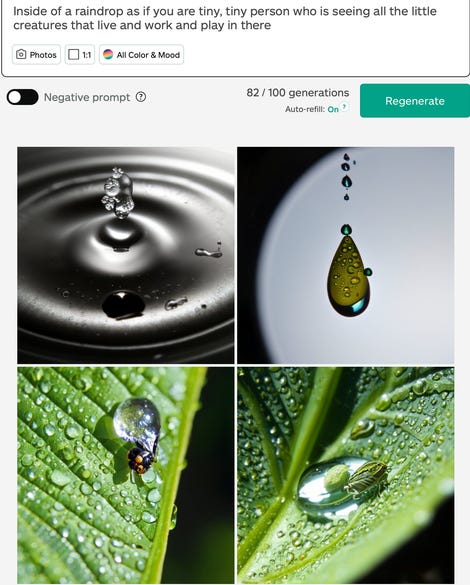
Generative AI by iStock
In fact, when a fantasy situation is realized by iStock, the results seem rather degraded compared to more realistic scenarios, as is the case with the prompt “A fleet of trucks driving up a waterfall outside of a fairy tale kingdom”, in the illustration at the top of this article.
The big question of copyright management
It is important to note that the compensation provided by Getty has important conditions and limitations. The content license agreement specifies that coverage ends when the user provides prompts that acknowledge the copyrighted material.
“iStock’s indemnification obligations do not apply to the extent that you generate content that includes prompts or data that includes names, likenesses of real people, trademarks, logos, works of “art, architecture or other elements protected by third party intellectual property rights that you do not have the right to use”, states the contract.
I tried several controversial prompts that academics Gary Marcus and Reid Southen say can be used in Midjourney to reproduce copyrighted images. In each case, either iStock produced an image that did not appear to have obvious aspects of copyrighted material, or the program did not generate an image and displayed a warning that the prompt was blocked because it was not compliant.
The test with C-3 PO and Star Wars
For example, the phrase “classic sci-fi movie droid” was used by Marcus and Southen in Midjourney to reproduce images that are almost identical to those of the C-3 PO droid from Star Wars. The same query to iStock produced several images that look like toy robots, but have nothing to do with Star Wars.
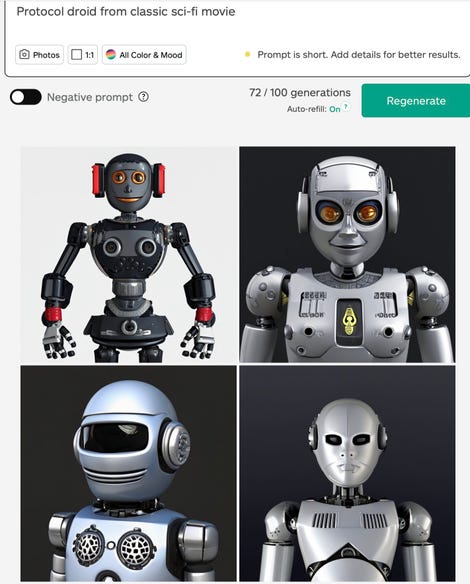
Generative AI by iStock
In another instance, the prompt “robed man with light sword, screenshot” was used by Marcus and Southen to trick Midjourney into producing a near-exact replica of a shot of Obi-Wan Kenobi in Star Wars .
In iStock, the same prompt generated not only a refusal to generate an image, but also a warning that the word “sword” was banned because it “may violate our AI policy.”
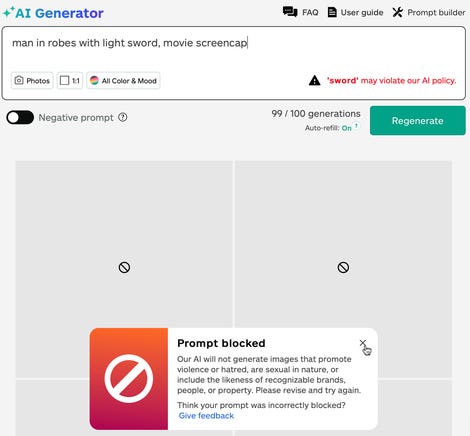
Generative AI by iStock
However, some brands can pass through the filter. I was able to type in “ZDNET reporters as interstellar superheroes,” and I got images of people in costumes looking heroic.
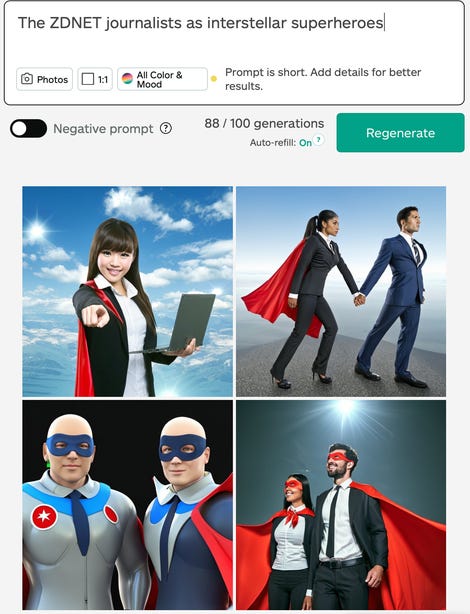
Generative AI by iStock
Source: “ZDNet.com”
